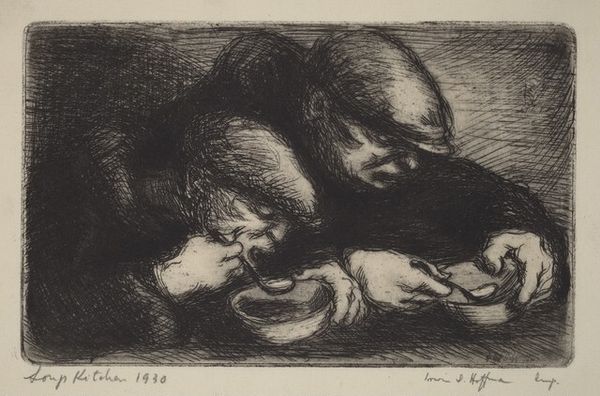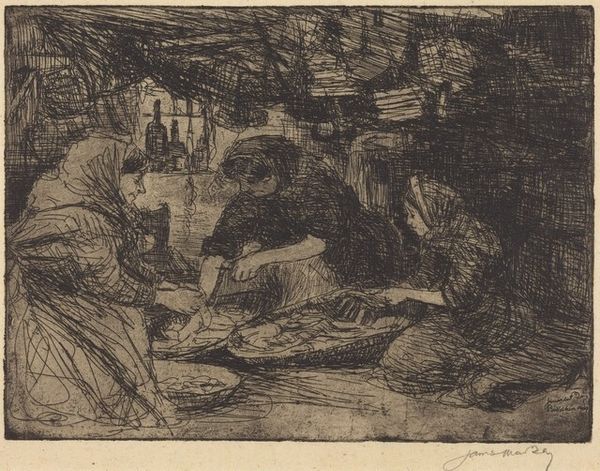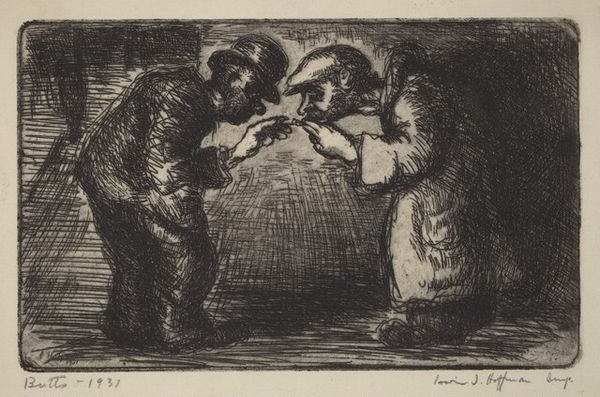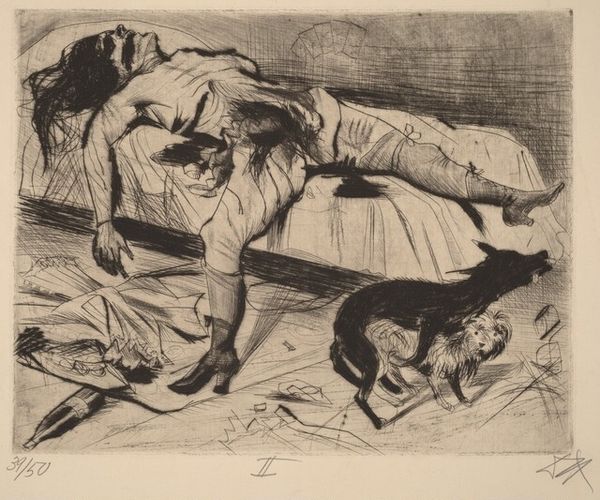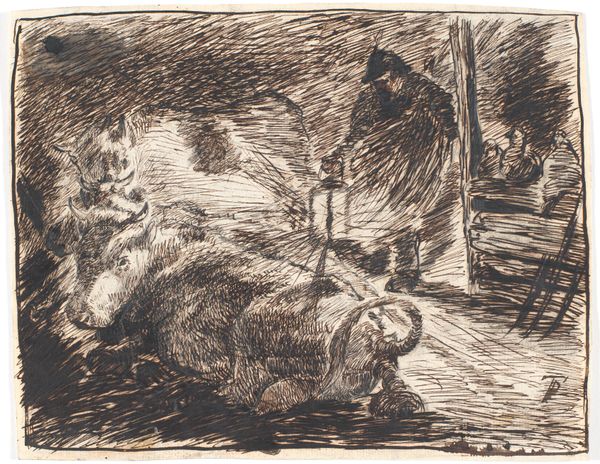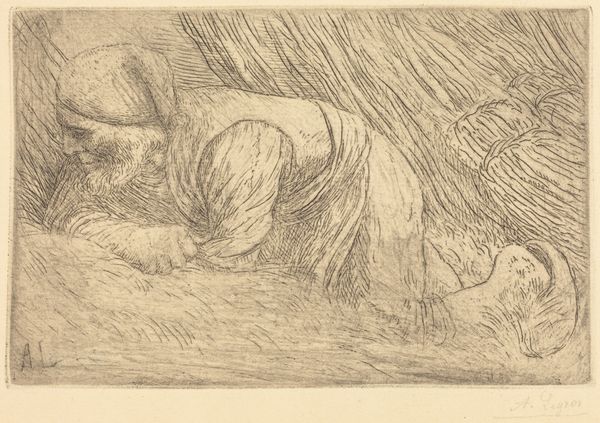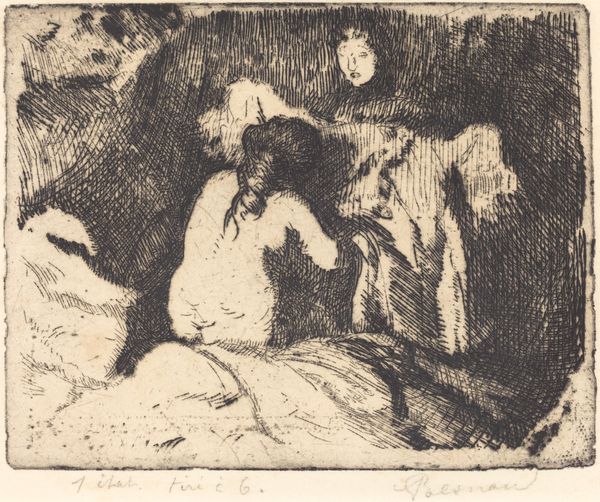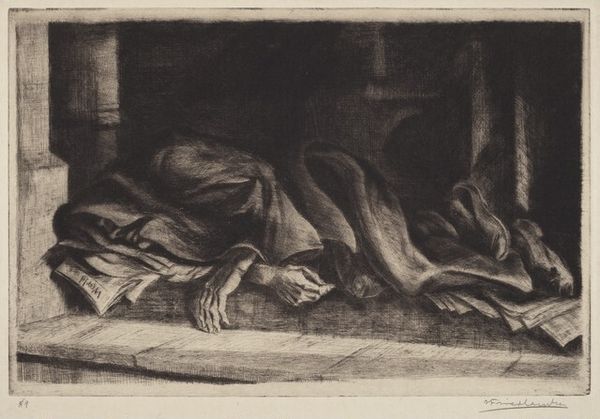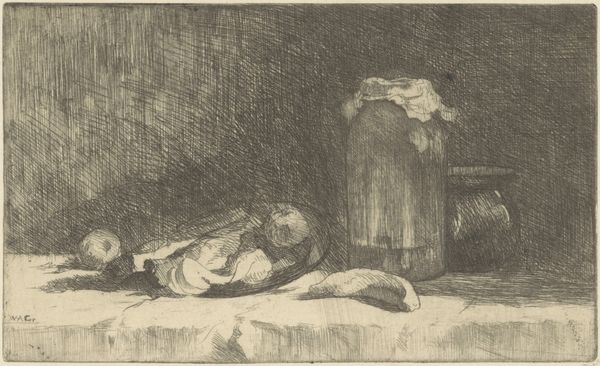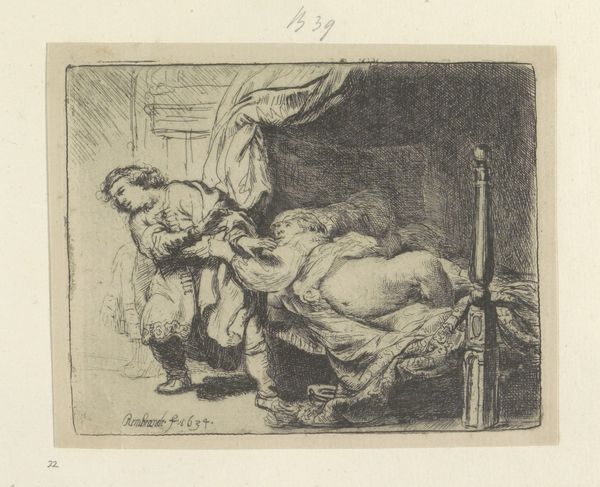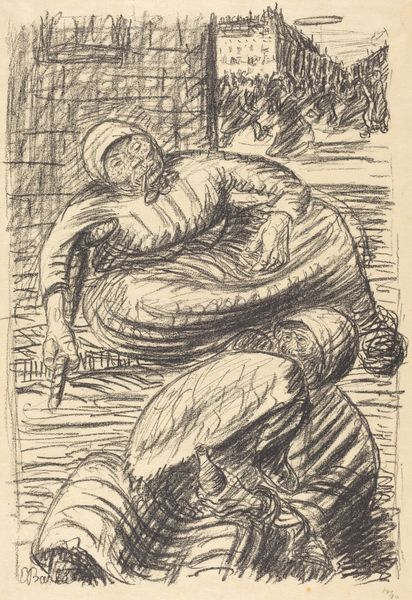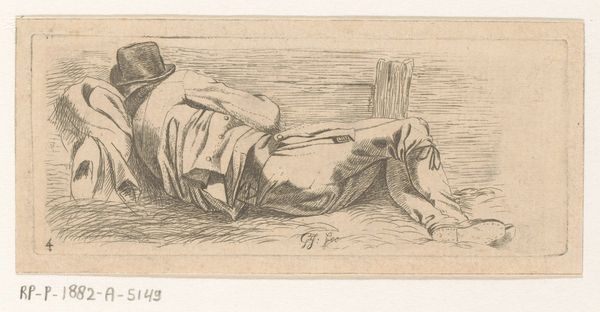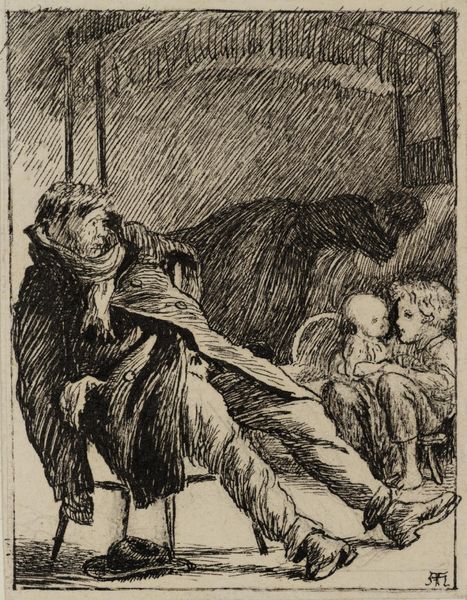
print, etching, graphite
# print
#
etching
#
figuration
#
pencil drawing
#
graphite
#
cityscape
#
realism
Dimensions: image: 102 x 159 mm paper: 159 x 254 mm
Copyright: National Gallery of Art: CC0 1.0
Curator: This etching, titled "New York," comes to us from Irwin D. Hoffman, in 1931. It’s a captivating piece rendered in graphite, showcasing his masterful skill in printmaking. Editor: Graphite whispers of immediacy, doesn't it? Almost like a captured breath. I find it has this hazy, almost dreamlike quality. Immediately I see the stark reality of Depression-era anxieties – the weariness seeping from these huddled figures feels palpable. Curator: The choice of graphite as a medium adds a layer to the artwork. Given its association with sketching, it imbues the final product with an aura of authenticity – of glimpsing a moment in its raw, unvarnished state. Visually and conceptually, this technique reinforces a sense of being caught unawares in a scene unfolding spontaneously before us. Editor: Spontaneity is key here, isn't it? It avoids sentimentality by being straightforward, but the symbols themselves, especially in that time, would be so loaded. Hoffman gives them such quiet dignity, but, if one can see, how easily it would be to reduce those two characters into caricature! Curator: The cityscape is barely sketched in the background but still conveys something significant about social change and life during The Great Depression. In much art of this period, it’s hard to find such a personal moment in the unforgiving, industrial landscape of the 1930's. Editor: It strikes a powerful chord – seeing a moment of quiet in an otherwise busy urban landscape, where everyone would otherwise look away and ignore this tenderness. A reminder, I guess, of what's easy to overlook: the quiet heroism of enduring when times are brutal. Curator: It’s incredible how the piece embodies universal qualities by drawing our gaze onto subjects frequently ignored in a rapidly changing urban landscape. A small act of making a memory visible when society prefers them forgotten. Editor: Yeah, in that respect, it almost acts as a form of preservation. And now we're standing here doing it again... Maybe art really can transcend time and oblivion.
Comments
No comments
Be the first to comment and join the conversation on the ultimate creative platform.
